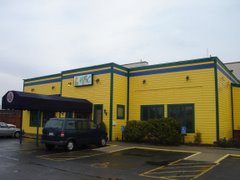First off, I'd like to apologize for the lack of updates from the sober brewer. I have been too embarrassed by my college football picks, to show my face on this site. But I feel I owe it to the one guy from Estonia that visited our blog to suck it up and write something down. So today I think we'll talk about the "International Hop Crisis," the factors causing it and of course our unwise and irreverent response.
For those of you that don't know, hops are one of the four main ingredients in beer, along with malt, water and yeast. Hops contribute bitterness, flavor and aroma to finished beer. The bitterness comes from compounds called alpha-acids present in hops and certain hop varieties have more alpha-acids then others, and that amount can vary from year to year. As a general rule, the higher the alpha-acid value the less hops you have to use to achieve the same bitterness level. It's important to talk about alpha-acids and how that effects the hop supply because over the past 35 years the development of high-alpha hop varieties has led to an oversupply of hop products, which in turn led to a reduction in prices obtained by hop growers. The reduction in prices caused many hop farmers to plant less acres, or to get out of the market altogether. As a result the number of U.S. hop growers has fallen from 515 in 1950 to only 45 in 2007. Which sets us up for what happened this year where a string of unfortunate events has led to a shortage.
Unfortunate event number one happened on Oct. 4, 2006 when a fire in a 40,000 sq/ft warehouse containing 2 million pounds of high-alpha hops, destroyed roughly 4% of the U.S. hop crop. Although on a global scale the loss of hops was small, the fire did serve as a turning point in the global pricing of hops.
Unfortunate event number two is the poor weather in Europe last year has had a large effect on the constriction of supply. In Europe, hops are not irrigated and when rain in not forthcoming, alpha-acid content and total yields drop. The average drop in alpha-acid content in the major hop growing countries from 2005 to 2006 was a whopping 43%.
Unfortunate events number 4,5 and 6 were severe storms in first, northern Idaho and Oregon where hail and heavy rains destroyed 450 metric tons of hops. Secondly, a similar event happened in Germany destroying 1,000 metric tons. And finally, two separate storms in Slovenia destroyed 33% of their hop crops.
Unfortunate event number seven affected U.S. high alpha hops during harvest. A suspected infection of Alternaria brought on by red spider mites, drastically reduced the alpha-acid content and turned hops from green to brown.
So what this all means is that there is not enough hop supply to satisfy global demand. In turn hop prices have nearly tripled which will undoubtedly bring more growers to the market, but their impact probably won't be felt for at least a year, possibly two. And since we, small craft brewers, don't have the buying power of the macrobrewers, we will have to settle for the table scraps that are left over.
I have painted a pretty grim picture for the immediate future of craft brewing, so you would expect the intelligent, prudent and rational response of a wise brewer, would be to brew more malt-forward beers, cutting down on hop usage in order to ensure and adequate supply for the rest of the year and possibly for years to come. Since the sober brewer is neither intelligent, prudent or rational, our brewing philosophy in the year of the Hop Crisis will be "Going down in a blaze of glory." We have finished brewing our highly hopped IPA and are planning on resurrecting the Homewrecker Double IPA and Amber Waves of Pain Double Amber. So be sure to make it into Bluegrass Brewing Co. (this means you too, Estonia guy) and get the hoppy beers while they last before we have to replace the hops with ditchweed, or worst yet, we have to start brewing light American lagers, gasp!
never trust The Sober Brewer
Jerry Gnagy
Tuesday, January 15, 2008
Subscribe to:
Post Comments (Atom)


No comments:
Post a Comment